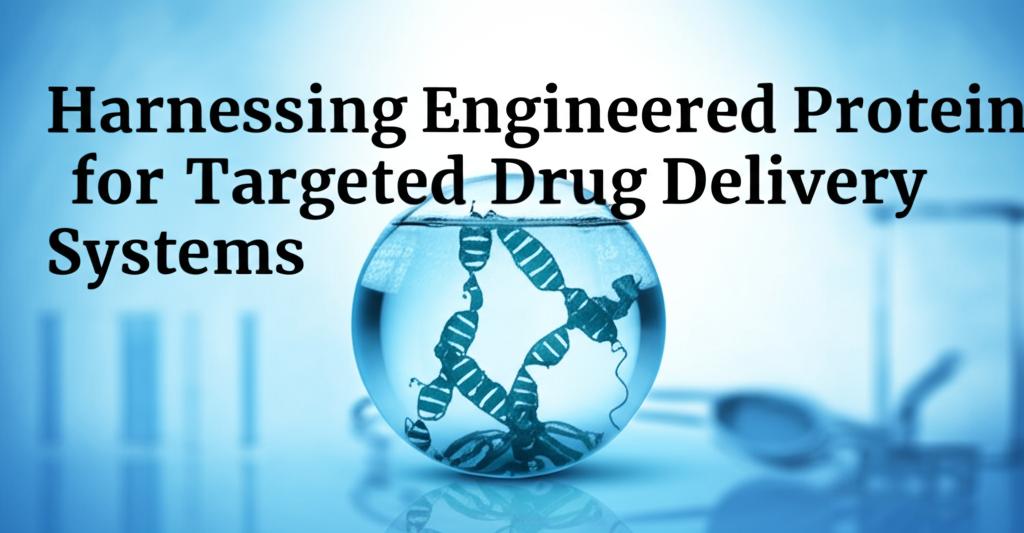Engineered proteins are revolutionizing the landscape of targeted drug delivery, offering unprecedented precision and efficacy in treating a myriad of diseases, from cancers to genetic disorders. By leveraging the inherent biocompatibility and specificity of proteins, scientists can design sophisticated delivery vehicles that shuttle therapeutic payloads directly to diseased cells or tissues, thereby enhancing treatment outcomes while minimizing side effects associated with systemic drug administration.
The Advantage of Protein-Based SystemsThe use of proteins as drug carriers presents several key advantages. Their biological nature often translates to better biocompatibility and biodegradability compared to synthetic polymers, reducing potential toxicity. Furthermore, proteins can be engineered with remarkable precision to recognize specific molecular targets on diseased cells, such as overexpressed receptors on cancer cells. This targeting capability is crucial for concentrating therapeutic agents at the site of action, leading to increased local drug concentrations and reduced exposure of healthy tissues.
Diverse Protein Scaffolds for DeliveryA variety of protein structures are being creatively engineered for drug delivery. These include:
- Antibodies and Antibody Fragments: Monoclonal antibodies (mAbs) and their smaller fragments (like Fabs, scFvs) are widely used due to their exquisite ability to bind to specific antigens. Antibody-drug conjugates (ADCs) are a prime example, where a potent cytotoxic drug is linked to an antibody that targets cancer cells.
- Albumins: Human serum albumin (HSA) is an abundant plasma protein that can be exploited as a carrier due to its long half-life, biocompatibility, and ability to accumulate in tumors via the enhanced permeability and retention (EPR) effect. Drugs can be non-covalently bound or covalently conjugated to albumin.
- Viral Capsids: The natural ability of viruses to deliver genetic material into cells has inspired the use of engineered viral capsids (virus-like particles or VLPs) as drug carriers. These are non-infectious as they lack the viral genome but retain the cell-targeting and entry machinery.
- Self-Assembling Proteins: Proteins like ferritin or silk-elastin-like proteins (SELPs) can self-assemble into defined nanostructures (e.g., cages, nanoparticles) that can encapsulate drugs. Their surfaces can be further modified for targeted delivery.
- Affibodies and Other Non-Immunoglobulin Scaffolds: Smaller, robust protein scaffolds, such as affibody molecules, DARPins (Designed Ankyrin Repeat Proteins), and anticalins, offer alternatives to antibodies. Their small size can lead to better tissue penetration, and they can be engineered for high-affinity binding to various targets.
Protein engineering techniques, including rational design and directed evolution, are pivotal in tailoring these protein carriers. Key strategies include:
- Site-Specific Conjugation: Precisely attaching drugs or imaging agents to specific sites on the protein ensures homogeneity of the drug product and preserves the protein's function.
- Stimuli-Responsive Elements: Incorporating domains that respond to specific conditions within the diseased microenvironment (e.g., low pH in tumors, specific enzymes) can trigger drug release precisely at the target site.
- Multifunctionality: Engineering proteins to carry multiple therapeutic agents, targeting moieties, and imaging agents simultaneously allows for combination therapies and theranostics (combined therapy and diagnostics).
- Half-Life Extension: Techniques like PEGylation or fusion to albumin-binding domains can extend the circulation time of protein-based drugs, reducing dosing frequency.
Once administered, these engineered protein carriers navigate the bloodstream. Those designed with specific targeting ligands will bind to receptors or antigens predominantly expressed on the surface of diseased cells. This binding can trigger receptor-mediated endocytosis, an active process where the cell engulfs the protein-drug conjugate. Inside the cell, the drug is released, often within specific compartments like lysosomes, due to enzymatic cleavage of linkers or changes in pH.
Current Applications and Future HorizonsEngineered proteins are making significant strides, particularly in oncology, where several ADCs have received regulatory approval and many more are in clinical development. Beyond cancer, these systems are being explored for treating
inflammatory diseases, infectious diseases, and genetic disorders by delivering nucleic acids like siRNA or mRNA.
Despite the considerable progress, challenges remain. These include potential immunogenicity of engineered proteins, optimizing manufacturing processes for complex protein therapeutics, ensuring stability during storage and in vivo, and overcoming biological barriers that can limit tissue penetration and cellular uptake.
Looking ahead, the field is moving towards increasingly sophisticated designs. This includes the development of "smart" protein systems that can sense and respond to multiple biological cues, proteins that can cross challenging biological barriers like the blood-brain barrier, and personalized protein therapeutics tailored to individual patient profiles. The continued convergence of protein engineering, nanotechnology, and synthetic biology promises to unlock even more potent and precise drug delivery systems, transforming how we treat diseases.

